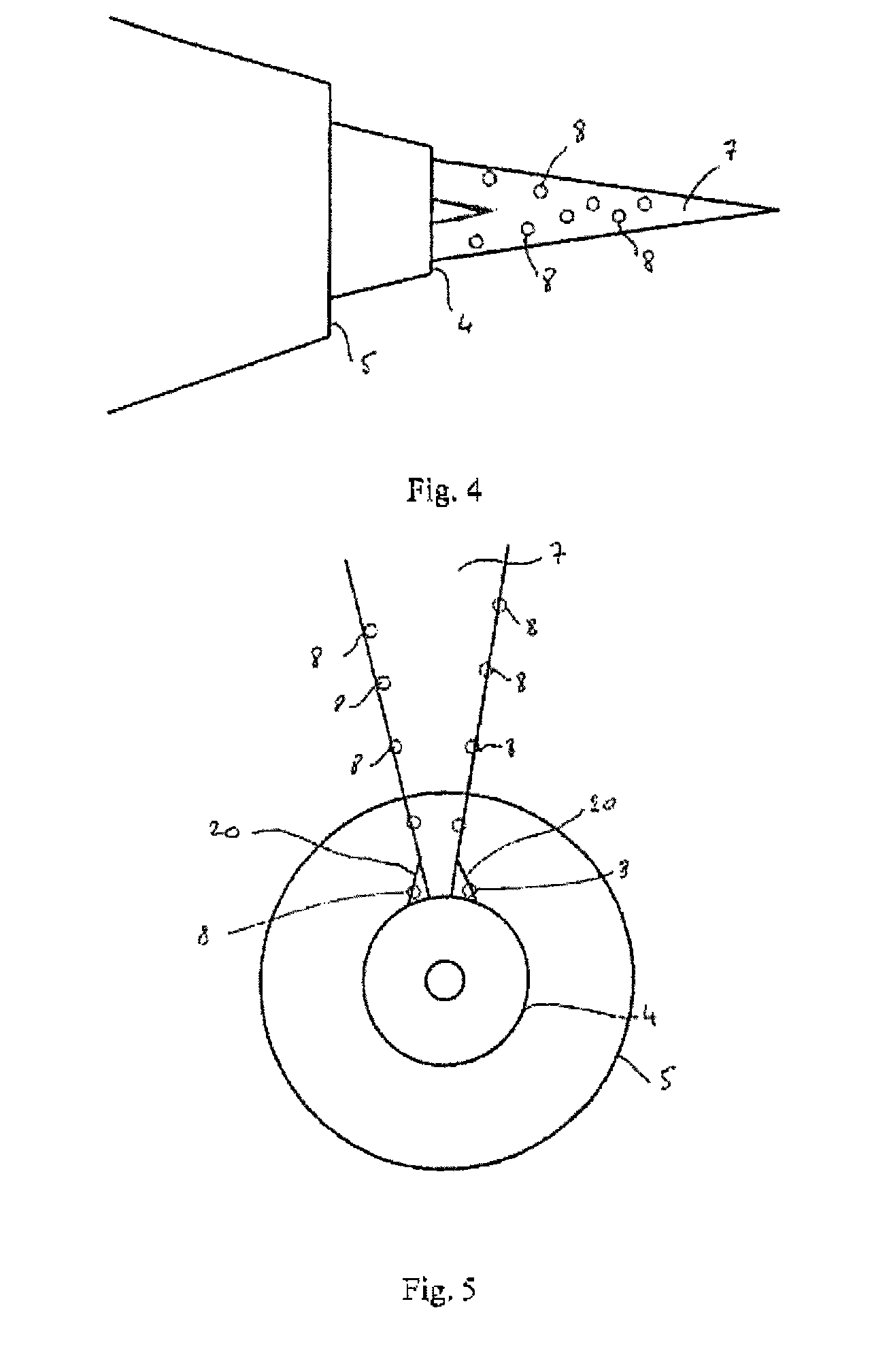Device for reducing noise from jet-pylon interactions on jet engines
- Summary
- Abstract
- Description
- Claims
- Application Information
AI Technical Summary
Benefits of technology
Problems solved by technology
Method used
Image
Examples
Embodiment Construction
[0033]Reference is made to FIG. 1 which shows an engine 1, of the dual-flow or bypass turbojet engine type, from which there are exhausted a primary flow or hot flow 2, and a secondary or bypass flow, also known as the cold flow 3. The hot flow leaves the engine 1 at a primary exit nozzle 4 whereas the cold flow leaves at a secondary exit nozzle 5. The engine 1 is attached to a wing 6 of an airplane (not depicted) by a supporting pylon 7. The pylon 7 is of substantially planar shape with an upper face for connecting to the airplane, two lateral flanks, here depicted as substantially vertical and mutually parallel, and a lower face or sole. Fairings 20, visible in FIG. 5, make the connection between the flanks of the pylon 7 and the top of the primary exit nozzle 4, so as to ensure a clean aerodynamic flow at the junction between these two elements. The pylon 7 runs longitudinally, i.e. in the direction in which the air flows around the engine, downstream of the exit plane of the exi...
PUM
 Login to View More
Login to View More Abstract
Description
Claims
Application Information
 Login to View More
Login to View More - R&D
- Intellectual Property
- Life Sciences
- Materials
- Tech Scout
- Unparalleled Data Quality
- Higher Quality Content
- 60% Fewer Hallucinations
Browse by: Latest US Patents, China's latest patents, Technical Efficacy Thesaurus, Application Domain, Technology Topic, Popular Technical Reports.
© 2025 PatSnap. All rights reserved.Legal|Privacy policy|Modern Slavery Act Transparency Statement|Sitemap|About US| Contact US: help@patsnap.com



